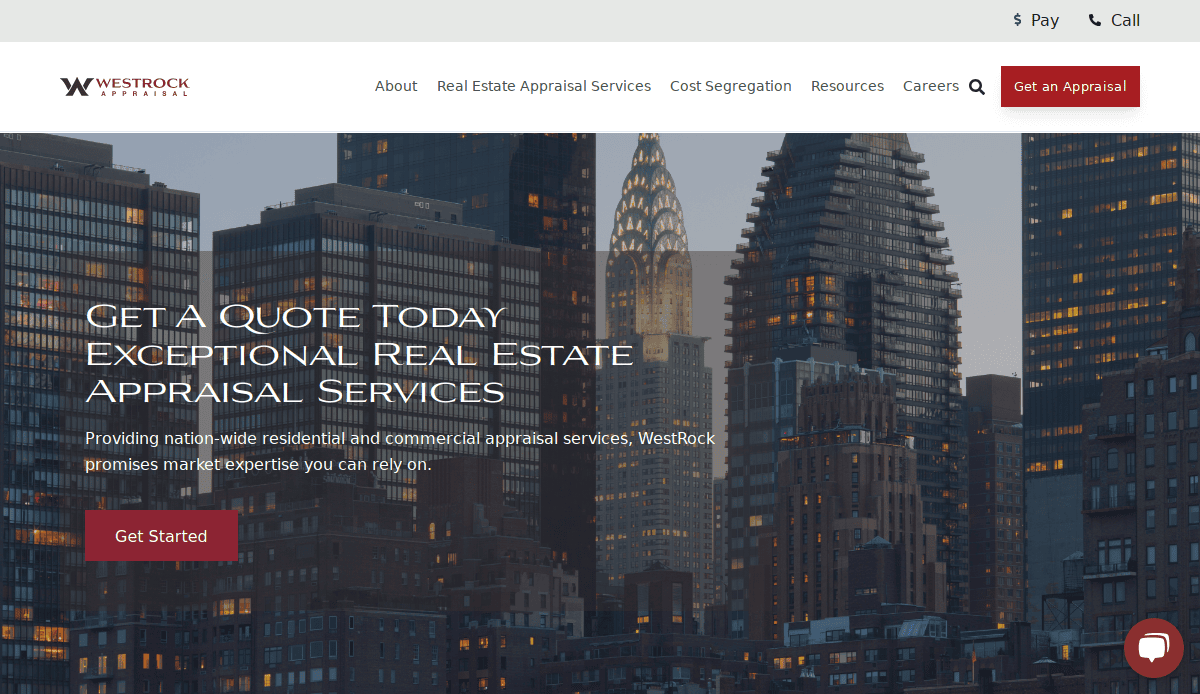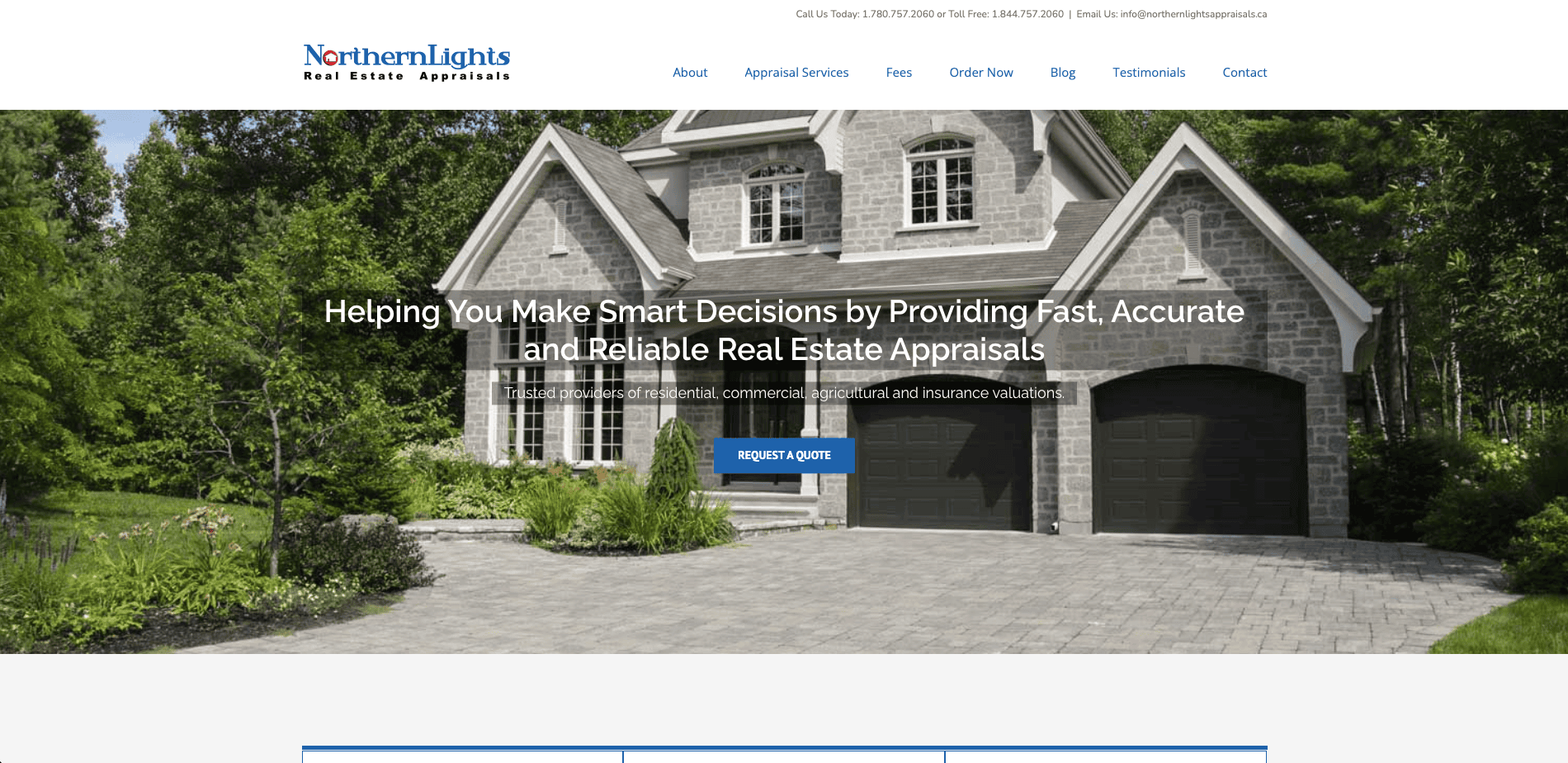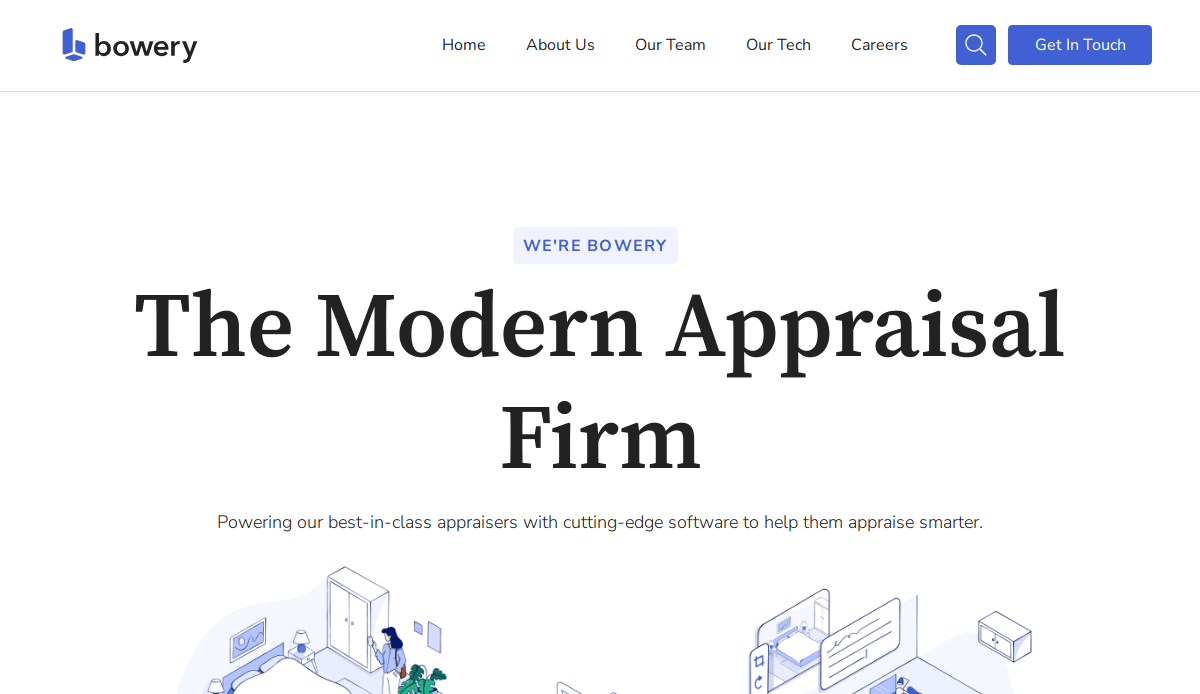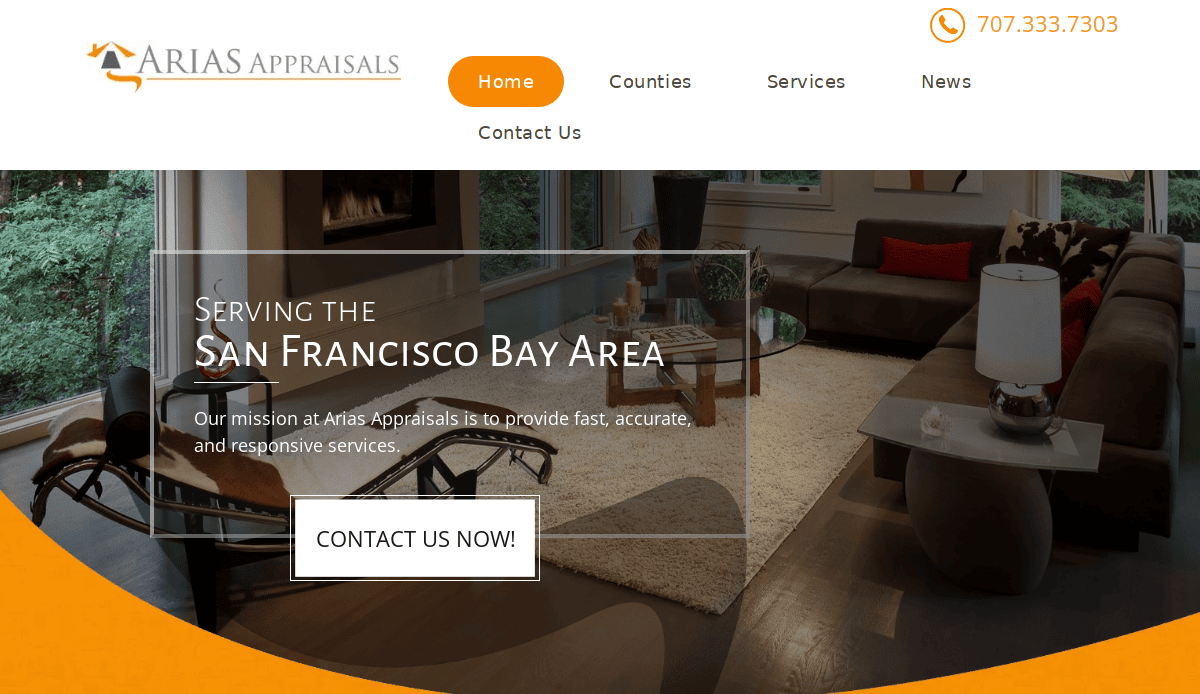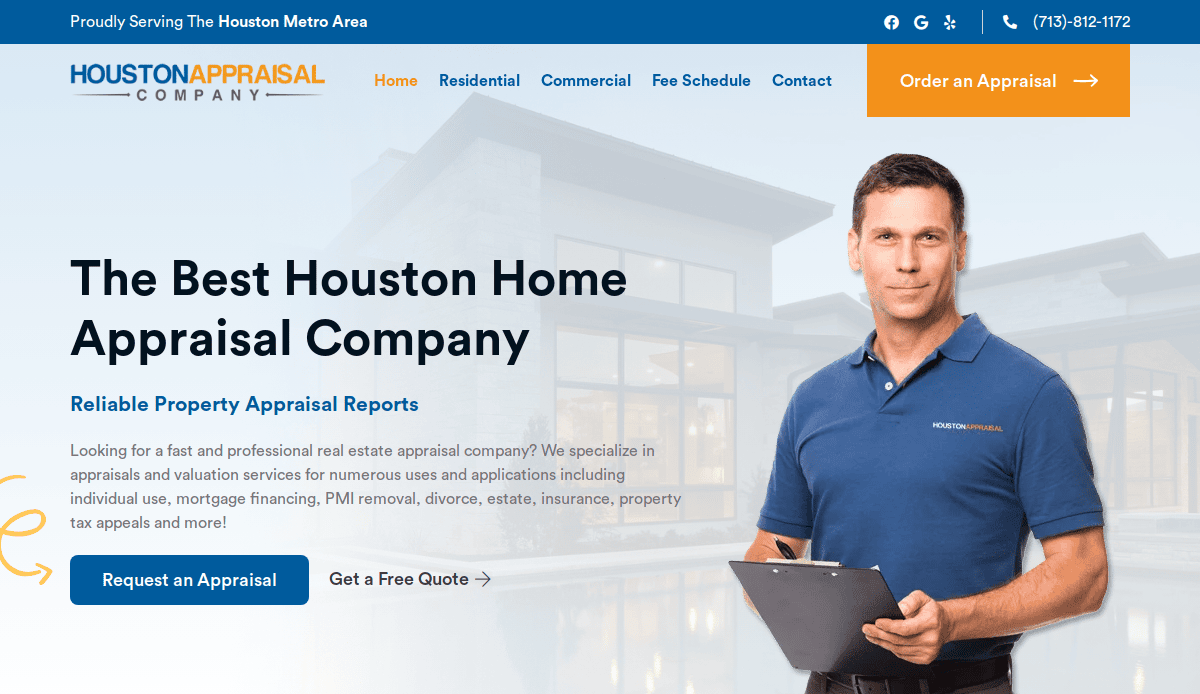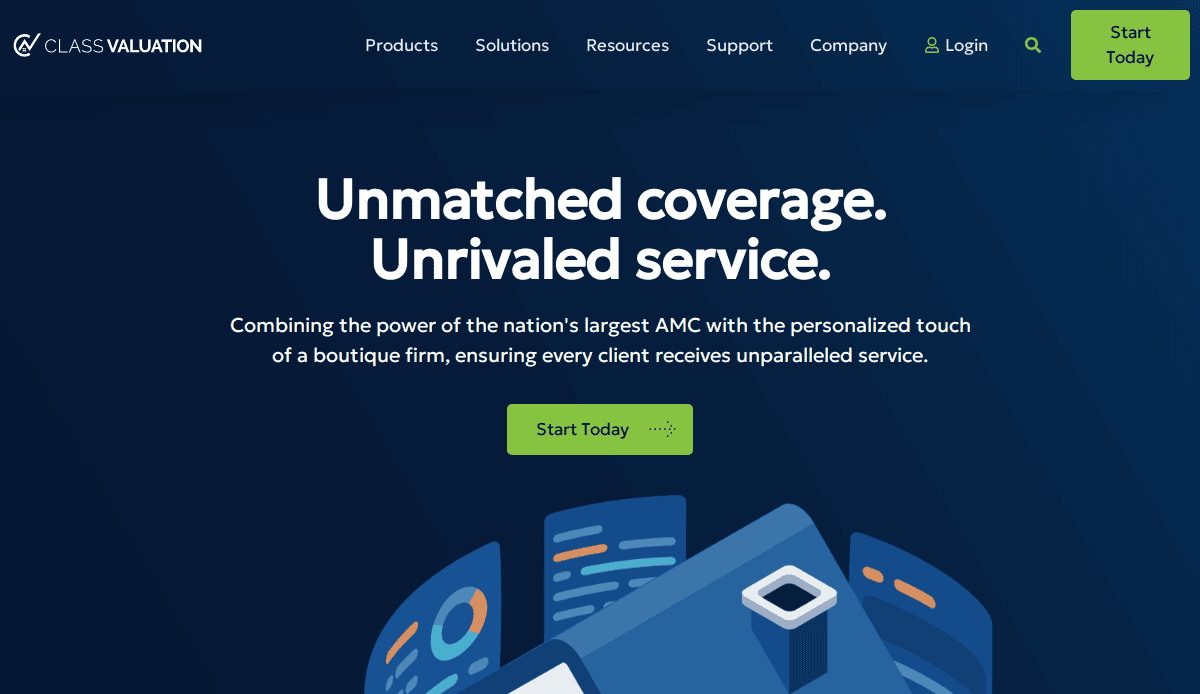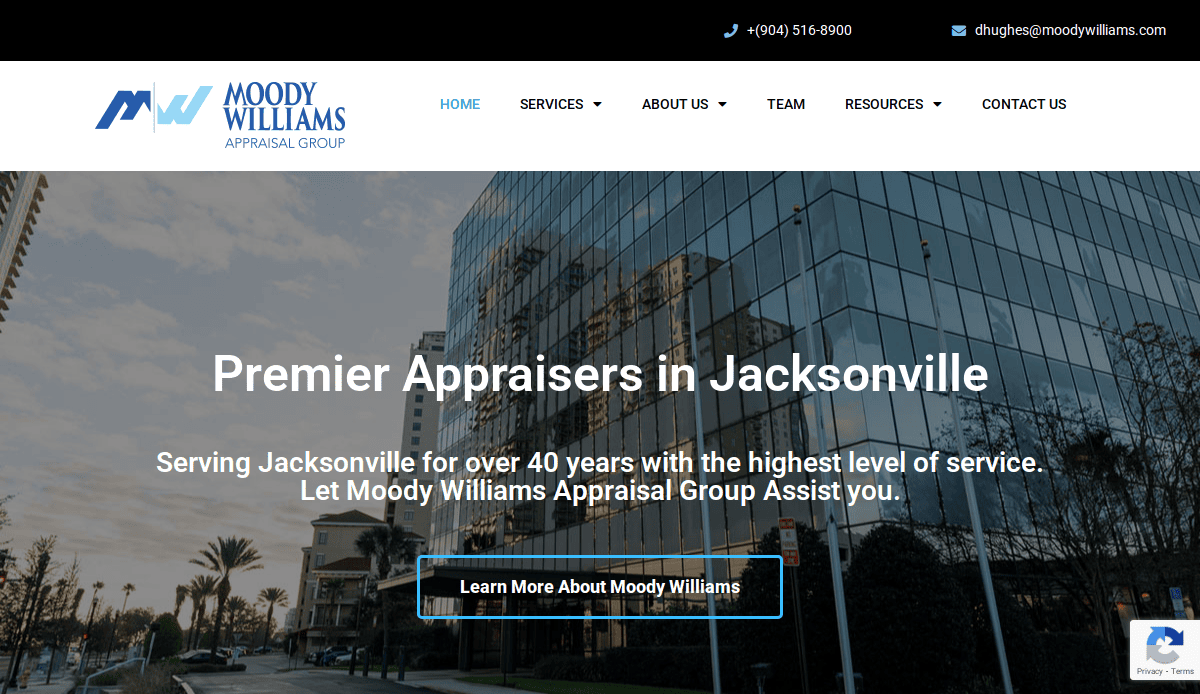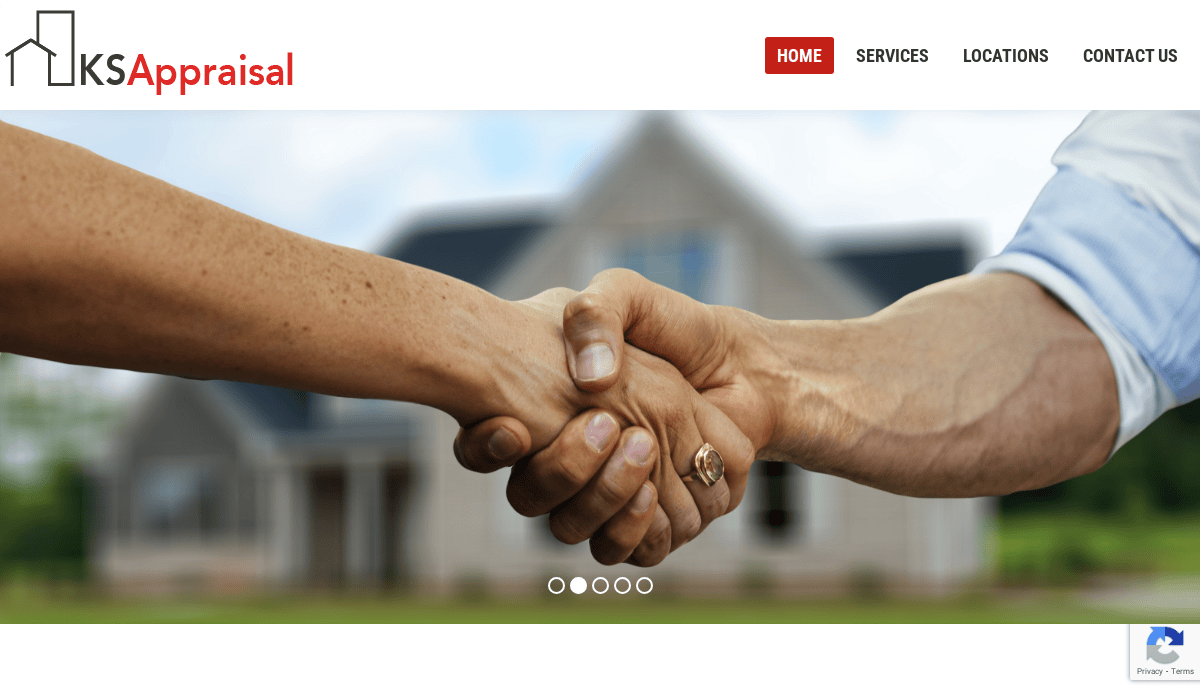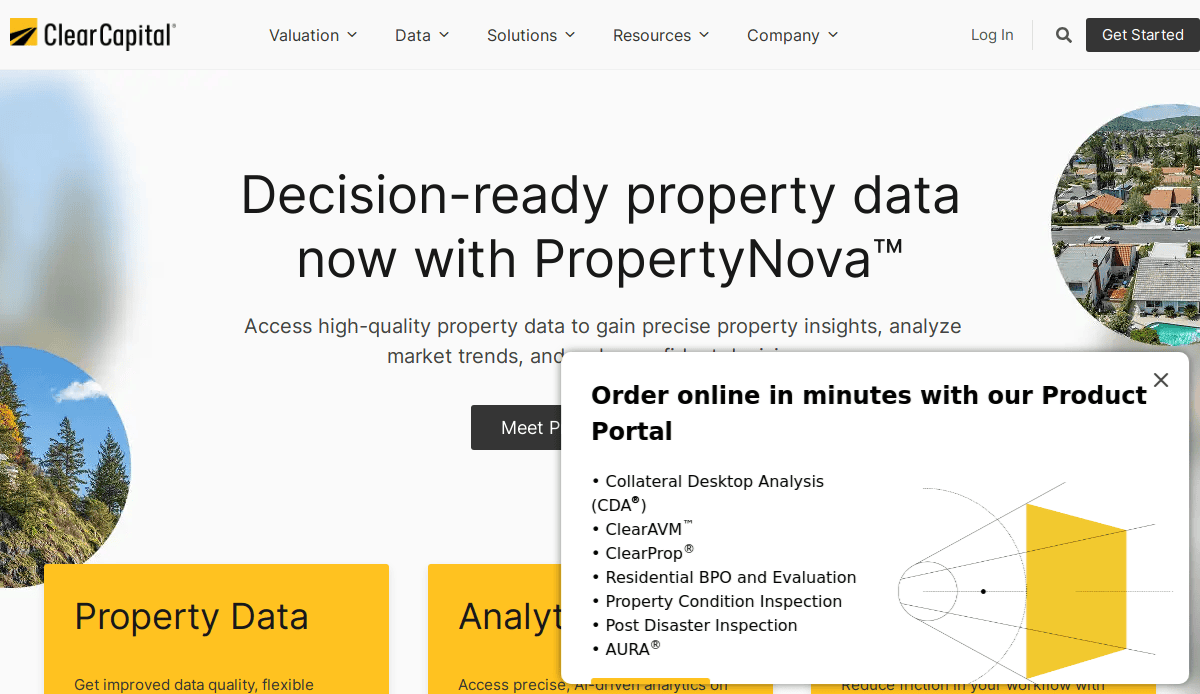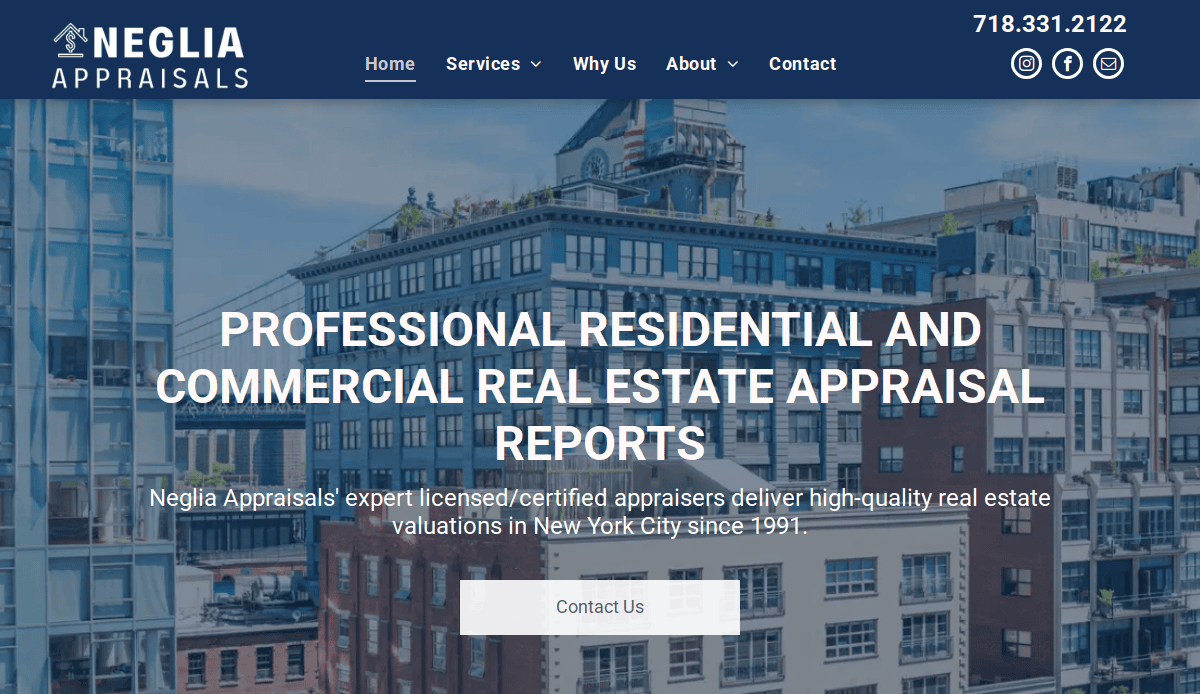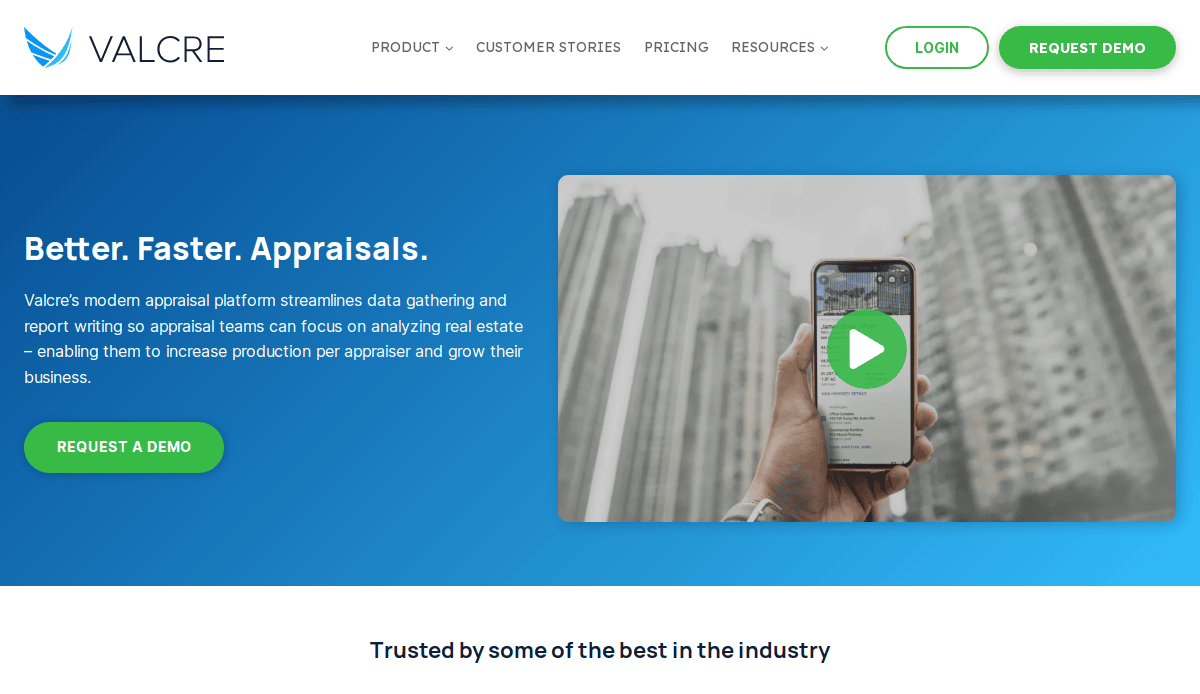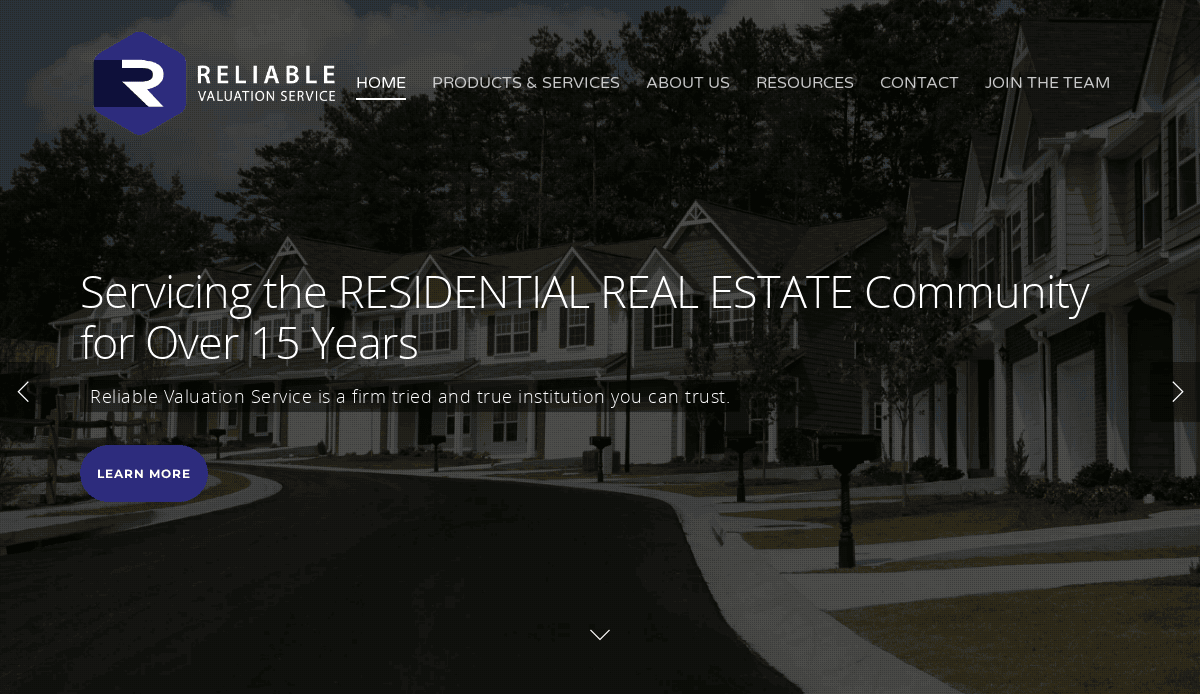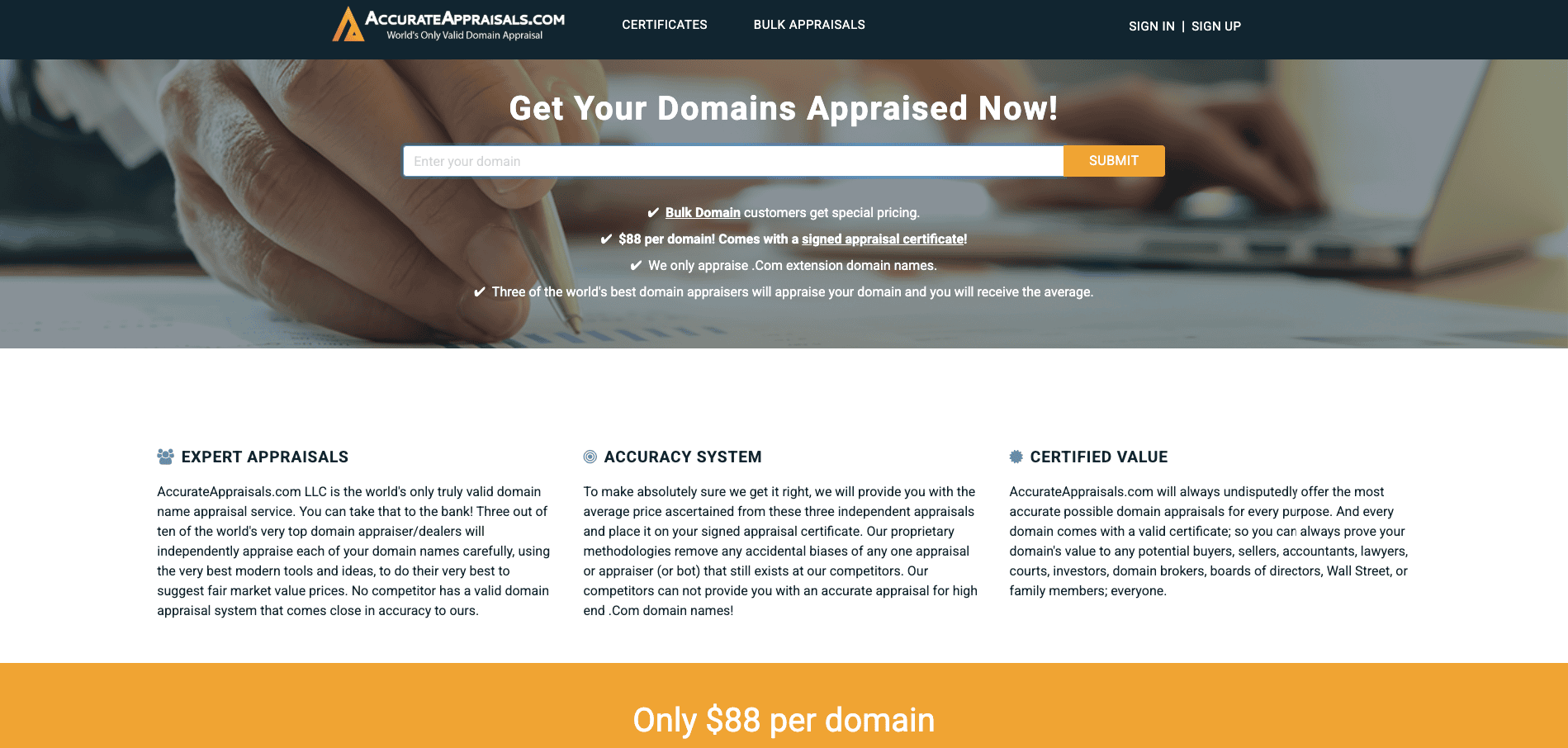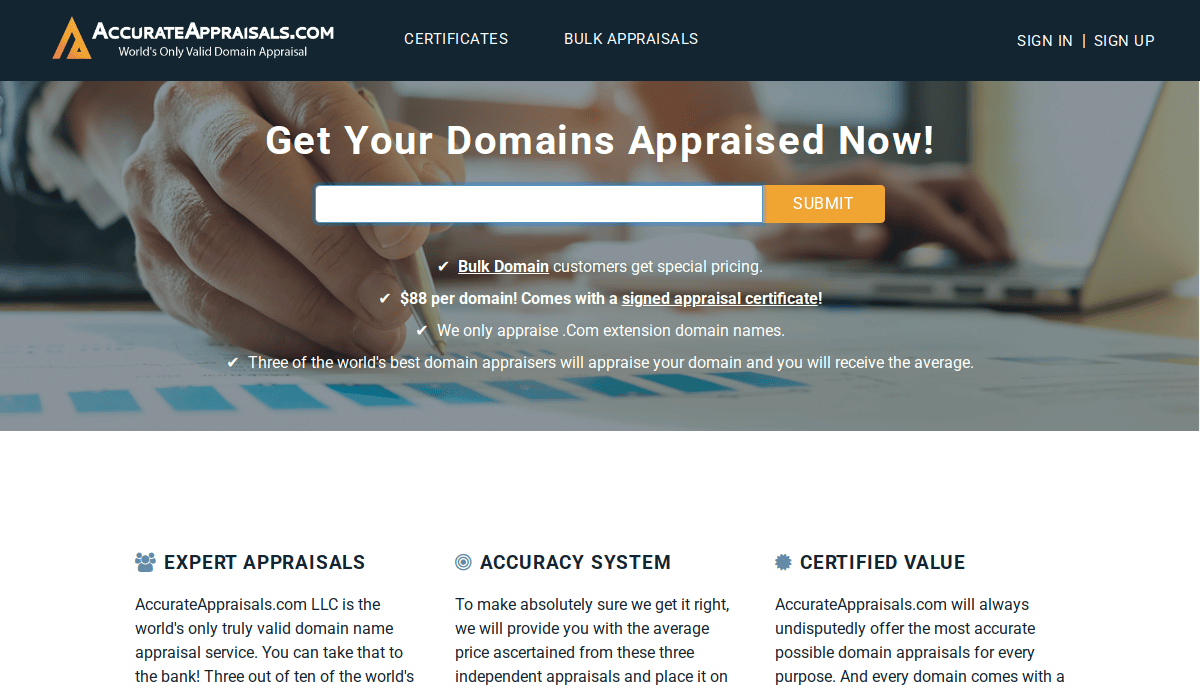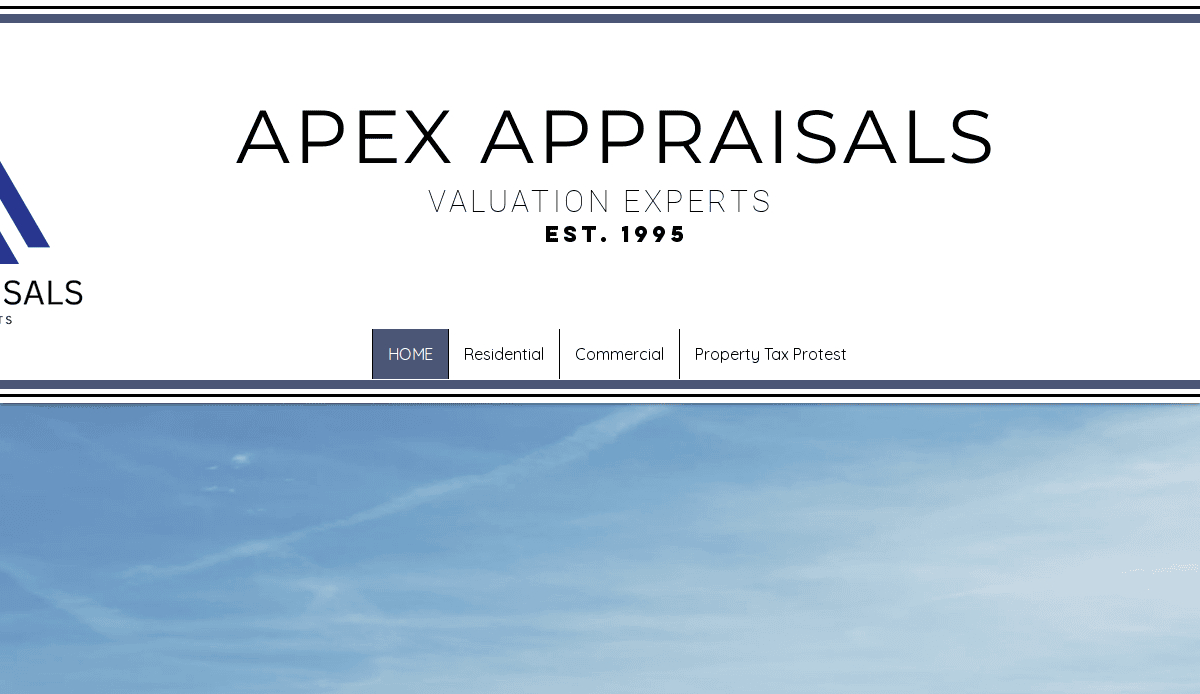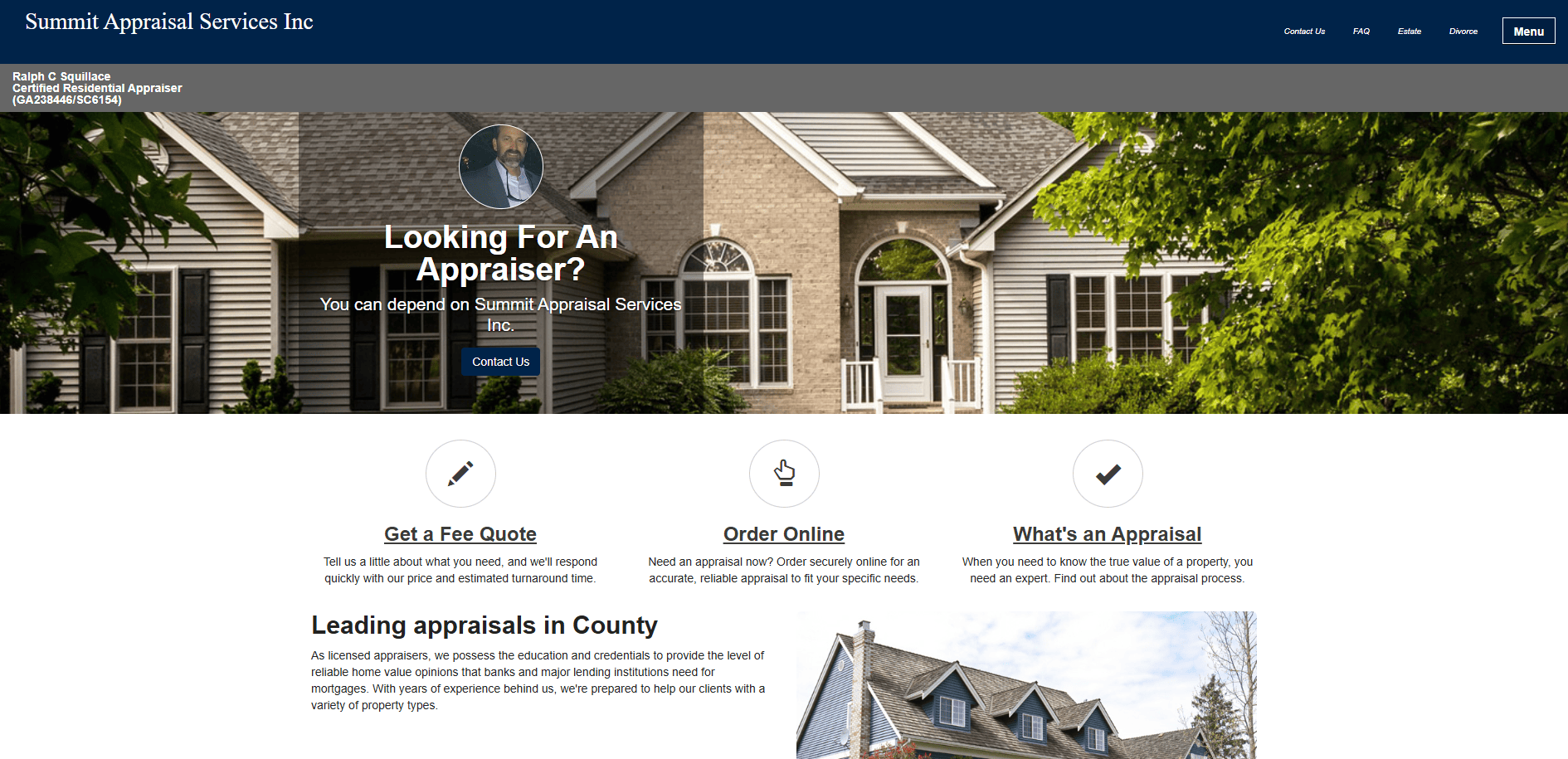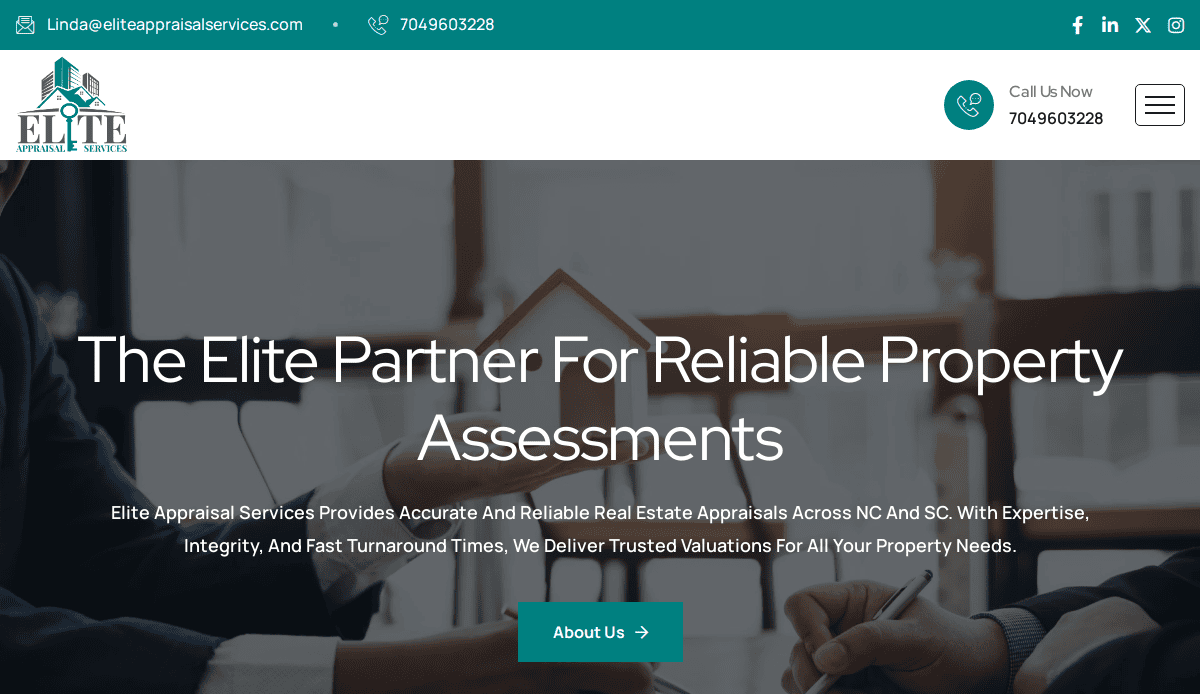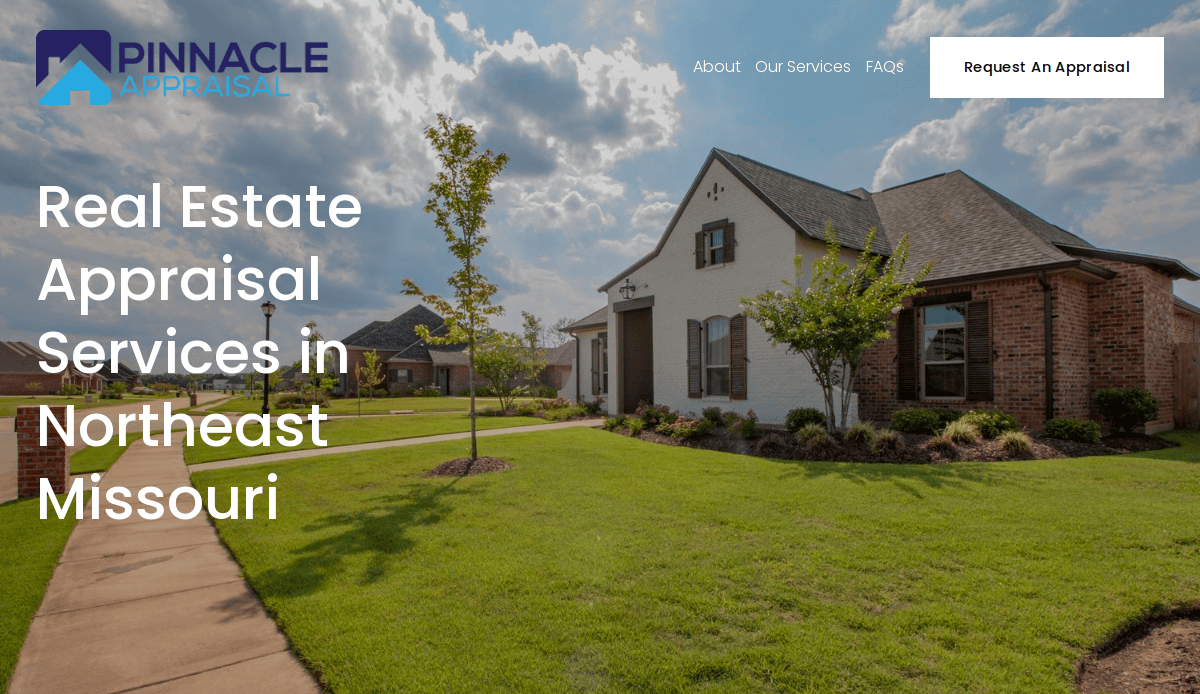Just looking for our Best Real Estate Appraisal Website examples list?
Why Real Estate Appraisal Website Design Matters More Than Ever
First impressions aren’t made in person anymore—they happen online. In the real estate industry, your website isn’t just a brochure—it’s your business’s digital storefront. Whether you’re a solo appraiser or part of a commercial real estate firm, your website is often the first and most important touchpoint for potential clients. But here’s the truth: a clunky, outdated, or hard-to-navigate site can quietly sabotage your credibility and cost you leads.
The best real estate websites do more than look good—they function as lead-generation machines. That’s the power of effective website design. From responsive design that works flawlessly on mobile to persuasive content that builds trust, every element of your site plays a critical role in attracting, converting, and retaining clients.
If you want to make your website not just visible but profitable, this guide is for you. We’ll show you what separates the best web design from the rest, what you need to create a real estate website that works 24/7, and how to avoid common design mistakes that weaken your online presence.
Planning Your Real Estate Appraisal Website: Strategy Comes Before Design
Before diving into visuals or layout, the most critical step in any successful site design project is strategic planning. For real estate appraisers, this means identifying exactly who the site is for, what actions you want visitors to take, and how the site will serve as a business tool, not just a digital brochure.
Every detail should be driven by purpose. Are you focused on residential or commercial real estate? Do you serve a specific geographic area or work with a niche client base like lenders, attorneys, or property owners? Clarifying this upfront helps you create a website that speaks directly to the right audience and guides them toward booking an appraisal, requesting a quote, or contacting your office.
Planning also involves mapping out the customer journey. From the homepage to service pages, visitors should move smoothly through the site with no friction. This includes outlining the key calls to action, like “Request an Appraisal” or “Get a Free Quote,” and determining where those prompts should appear to maximize engagement.
A well-planned site also builds trust. Your planning phase should account for where and how you’ll integrate testimonials, certifications, professional affiliations, and educational blog content. These elements can set you apart in a competitive local market.
Our top-tier digital marketing agency’s dedicated real estate web design services are built around this strategic approach. We help appraisers clarify their goals and design websites that serve as powerful tools for lead generation and client communication. Skipping this planning step leads to costly rework and missed opportunities.
Remember, a website without a clear purpose is just digital clutter. A website that’s thoughtfully planned is a business asset.
Design Principles That Drive Performance
Effective real estate website design balances form with function. It’s not just about looking good—it’s about supporting your business objectives through clear, strategic design choices. For real estate appraisers, these principles ensure your site builds trust, showcases credibility, and drives qualified leads.
1. Clarity Over Clutter
Visitors to your real estate website are typically looking for answers fast. Whether they’re trying to verify your licensing, request a property valuation, or understand your process, your layout should eliminate guesswork. Use concise copy, clearly labeled menus, and intuitive navigation to guide users effortlessly.
2. Visual Hierarchy That Supports Conversion
Designing a real estate website starts with identifying what matters most to your audience. Prioritize the elements that lead to action—your services, credentials, and contact methods—by giving them prominence through color, typography, or layout. Call-to-action buttons like “Request Appraisal” should stand out and be placed in multiple locations throughout the site.
3. Mobile Responsiveness
Over half of your website visitors will arrive via smartphone or tablet. A responsive design ensures your content looks great and functions flawlessly on all screen sizes. This isn’t optional—it’s essential for user experience and SEO performance, especially as more clients expect professional results on the go.
4. Design for Trust
In the real estate market, trust is everything. Integrate design elements that reinforce your credibility—professional headshots, client testimonials, industry certifications, and recognizable logos from associations like the Appraisal Institute. These subtle cues help first-time visitors feel confident about contacting your business.
5. Speed and Performance
A sluggish site loses visitors fast. Optimize image sizes, streamline code, and work with experienced web development professionals who understand how to balance visual impact with load times. Performance is a critical factor in how search engines rank your pages and how users perceive your business.
6. Scalable Architecture
As your real estate business grows, your website should evolve with it. Whether you’re expanding into commercial appraisals or adding new service areas, your site’s framework should be scalable. Avoid restrictive platforms or one-size-fits-all template solutions that limit future growth.
7. Brand Consistency
Every element—from fonts to color palette—should align with your brand identity. This creates a cohesive experience that reinforces professionalism and keeps your business top of mind. Estate agents and appraisers operating in competitive markets can’t afford to look inconsistent or outdated online.
Whether you’re aiming to build a real estate website from scratch or upgrade an existing one, applying these design principles ensures that your site serves your goals. The type of real estate website you choose to create should match your niche, speak to your audience, and function as a marketing tool, not just a digital placeholder.
Structuring Content and Navigation for Websites
When it comes to designing a high-performing website in this industry, content and navigation are inseparable. The way your content is organized—and how users access it—can determine whether a visitor converts into a client or leaves confused and frustrated.
Keep Navigation Simple and Predictable
The navigation bar should be straightforward and aligned with visitor intent. Start with no more than 5–7 main menu items, such as:
- Home
- About
- Services
- Service Areas
- FAQs
- Testimonials
- Contact
Drop-down menus can be used to break out detailed services, such as Residential Appraisals, Commercial Appraisals, Divorce Appraisals, or Estate Planning. Avoid vague labels like “Solutions” or “Info.” Visitors should know exactly what to expect when they click.
Sticky navigation—where the menu follows the user as they scroll—is also helpful for a smoother experience, especially on mobile devices. A clear “Request Appraisal” button should appear prominently in the header or navigation bar, drawing users toward your primary conversion goal.
Prioritize User-Centric Content
Each page should serve a distinct purpose and speak directly to your audience’s needs. On the homepage, lead with a strong value proposition and a summary of your services. Service pages should go beyond listing offerings—describe the appraisal process, who the service is for, and how clients benefit. Include FAQs to proactively address common concerns.
Use short paragraphs, subheadings, and bullet points to make content scannable. People don’t read—they scan. Each section should answer one key question your visitor might have.
Build Trust With Testimonials and Credentials
Trust signals should be integrated into your content flow, not buried on a separate page. Add brief testimonials throughout key pages, and include logos from relevant associations or certifications near CTAs. For example, displaying your affiliation with the Appraisal Institute or showcasing licensure builds confidence.
Create a Path for Every Visitor
Not everyone who visits your site is ready to contact you immediately. Offer pathways for different levels of intent. Someone ready to hire you should easily find a contact form or phone number. Someone just researching should find helpful blog content or a downloadable guide to understanding appraisals.
Clear, intuitive content paired with streamlined navigation is the foundation of a site that looks professional and works as a lead-generation tool. In this industry, making it easy for visitors to find what they need builds trust, and trust drives business.
How Visual Elements Strengthen Your Site
Visual design is more than just decoration—it’s a strategic tool that shapes how users perceive your brand and interact with your content. In this industry space, where trust and professionalism are paramount, visual elements must be carefully selected to reinforce credibility and enhance usability.
Consistent Brand Identity
Your website should visually echo your brand’s core values and professionalism. That means using consistent fonts, colors, and imagery throughout every page. A cohesive visual identity builds recognition and trust. From the color palette to typography, every detail should align with how you want your appraisal firm to be perceived—accurate, credible, and detail-oriented.
Professional Photography
Stock images may be a quick fix, but they often undermine authenticity. Instead, use high-resolution photography of your team, office, and service areas when possible. Visuals that reflect your actual business reinforce trust and make your brand feel more approachable. If photography isn’t an option, choose premium stock that matches your niche and feels relevant to your local market.
Intuitive Visual Hierarchy
The way your content is arranged visually affects how users navigate your site. Headings, subheadings, and calls to action should be styled to draw the eye in a logical flow. Use white space strategically to reduce visual noise and guide users toward the next step, whether that’s reading more or filling out a contact form.
Infographics and Icons
This industry involves technical information that can be intimidating. Use simple icons and custom infographics to break down services, explain processes, or highlight differences between appraisal types. These visual tools help users absorb complex information quickly and improve retention.
Trust-Building Elements
Visual elements can also serve as credibility indicators. Display badges for certifications, affiliations, or years in business. Add testimonial quote boxes styled for emphasis. Include visuals from past projects or satisfied clients when applicable. These subtle cues have a powerful impact on perceived trustworthiness.
Examples That Inspire
For ideas on how to integrate these principles, explore the 25 Best Real Estate Websites on our blog. These examples show how effective visual elements—from layout to photography—can elevate a brand and create seamless user experiences.
The right visual design doesn’t just support your content—it amplifies it. In an industry where precision and professionalism matter, the visual layer of your website must do more than look nice; it must work hard to support your brand’s credibility and your site’s performance.
Why Ongoing WordPress Maintenance is Critical
A website isn’t something you build once and forget. Just like an appraisal report needs to be timely and accurate, your website must stay updated, secure, and optimized to remain effective. For WordPress sites, this means regular maintenance is non-negotiable.
Security Updates
WordPress powers a large portion of the web, which makes it a frequent target for security threats. Without routine updates to WordPress core, themes, and plugins, your site becomes vulnerable to exploits that can compromise data and credibility. For real estate appraisers handling client information, maintaining trust means staying protected. Applying updates promptly closes those security gaps before they’re exploited.
Plugin and Theme Management
Over time, plugins may become outdated or conflict with each other, potentially breaking key features like contact forms, maps, or scheduling tools. Routine maintenance ensures that every plugin and your site’s theme continue to work smoothly together. This is especially important if you use tools tailored to your appraisal process, such as form builders or location-based services.
Backup and Restore Capabilities
No one expects their site to crash—but if it does, a recent backup can mean the difference between a quick recovery and total data loss. A strong maintenance plan includes automated daily backups stored off-site and the ability to restore your site quickly without disruptions to your business.
Speed and Performance Optimization
Slow websites lose clients. Real estate clients often use mobile devices to browse, and they expect fast load times. Maintenance includes cleaning up unnecessary files, optimizing databases, and ensuring media doesn’t bog down performance. This keeps your site fast, responsive, and aligned with search engine ranking factors.
SEO Health Checks
SEO doesn’t stop at publishing optimized content. Ongoing maintenance should include monitoring for broken links, updating outdated information, and ensuring on-page SEO elements remain accurate. Even small issues like a broken internal link can hurt your ranking and user experience.
Compatibility with New Technologies
As browsers, mobile devices, and WordPress itself evolve, your website must stay compatible. Routine checks ensure your site performs well across all major platforms and devices, preserving your reputation and keeping leads flowing.
For real estate professionals, ongoing WordPress maintenance is an operational need, not a technical luxury. It ensures your site continues to reflect your professionalism, generate leads, and function without fail, day after day. Skipping maintenance may save time now, but it guarantees headaches later.
20 Examples of Successful Real Estate Appraisal Website Designs to Inspire
1. Westrock Appraisal
Location: Dallas, TX
Key Takeaways:
- Clean, modern layout with intuitive navigation
- Accessibility features like text scaling and high-contrast settings
- Clear presentation of services and expertise
2. Northern Lights Appraisals
Location: Anchorage, AK
Key Takeaways:
- Sleek, professional design with a sophisticated color scheme
- Well-organized content providing a compelling user experience
- Emphasis on local expertise and services
3. Bowery Valuation
Location: New York, NY
Key Takeaways:
- Innovative, data-driven approach to appraisals
- User-friendly interface with clear service offerings
- Strong emphasis on technology and efficiency
4. Arias Appraisals
Location: Miami, FL
Key Takeaways:
- Personalized service approach highlighted throughout the site
- Clean layout that focuses on essential information
- Comprehensive FAQs enhancing user understanding
5. Houston Appraisal Company
Location: Houston, TX
Key Takeaways:
- Emphasis on local expertise and knowledge
- Simple contact forms encouraging user engagement
- Informative blog providing industry insights
6. Class Valuation
Location: Troy, MI
Key Takeaways:
- Focus on innovative technology solutions
- Professional design instilling trust and credibility
- Client testimonials providing social proof
7. Moody Williams
Location: Atlanta, GA
Key Takeaways:
- Customer-centric content emphasizing satisfaction
- Detailed service descriptions clarifying offerings
- Easy appointment scheduling enhancing user experience
8. Titan RE
Location: Denver, CO
Key Takeaways:
- Innovative service offerings showcased effectively
- Client-focused content addressing user needs
- Interactive tools engaging users throughout the process
9. KS Appraisal
Location: Kansas City, MO
Key Takeaways:
- Emphasis on reliable and accurate services
- User-friendly interface facilitating navigation
- Comprehensive resources aiding user understanding
10. Clear Capital
Location: Reno, NV
Key Takeaways:
- Data-driven approach ensuring accuracy
- Professional design reflecting credibility
- Client testimonials enhancing trust
11. Neglia Appraisals
Location: New York, NY
Key Takeaways:
- Focus on both residential and commercial appraisals
- Professional appraisers with extensive experience
- Accessible contact information for user convenience
12. Valcre
Location: San Diego, CA
Key Takeaways:
- Innovative appraisal software solutions
- Clean and modern design enhancing user experience
- Comprehensive service offerings detailed clearly
13. Reliable Valuation Service
Location: Chicago, IL
Key Takeaways:
- Dependable services emphasized throughout the site
- User-friendly interface for easy navigation
- Comprehensive resources aiding client understanding
14. Titan Valuation
Location: Phoenix, AZ
Key Takeaways:
- Innovative services highlighted effectively
- Client-focused content addressing user needs
- Interactive tools engaging users throughout the process
15. Accurate Appraisals
Location: Seattle, WA
Key Takeaways:
- Emphasis on accuracy and reliability
- Professional design instilling trust
- Comprehensive service descriptions clarifying offerings
16. Precision Appraisers LLC
Location: Brownsville, MN
Key Takeaways:
- Detailed service offerings for various appraisal needs
- User-friendly design facilitating navigation
- Emphasis on precision and accuracy
17. Apex Appraisal Group
Location: Houston, TX
Key Takeaways:
- Comprehensive appraisal services for diverse clients
- Modern design enhancing user engagement
- Clear calls to action encouraging user interaction
18. Summit Appraisal Services
Location: Evans, GA
Key Takeaways:
- Innovative valuation solutions for various needs
- Professional design reflecting credibility
- Client testimonials enhancing trust
19. Elite Appraisal Services
Location: Miami, FL
Key Takeaways:
- Focus on elite and luxury property appraisals
- Clean and modern design enhancing user experience
- Comprehensive service offerings detailed clearly
20. Pinnacle Appraisal Group
Location: Kirksville, MO
Key Takeaways:
- Comprehensive appraisal services for diverse clients
- Modern design enhancing user engagement
- Clear calls to action encouraging user interaction
Ready to Build a Real Estate Website That Works for You?
Your website is no longer just a digital business card—it’s a powerful tool that shapes how you’re perceived and how your appraisal business grows. In today’s competitive real estate market, a successful real estate website requires careful planning, strategic content, and design that enhances user engagement. Whether you’re targeting residential clients or expanding into commercial real estate platforms, your website must reflect your professionalism and make it easy for visitors to take action.
If you’re ready to turn your website into a high-performing asset for your business, our full-service digital marketing agency is here to help. Our team specializes in custom real estate website development that aligns with your goals, audience, and the unique design needs of real estate companies.
Get your custom website strategy from our team of experts and make your real estate website a tool that actually drives results.
Frequently Asked Questions About Real Estate Website Design for Appraisers
1. What makes a great real estate website for appraisers?
A great real estate website focuses on clarity, speed, and credibility. For appraisers, this means providing clear service descriptions, showcasing licensure and affiliations, including testimonials, and ensuring the website looks modern and professional. A trusted real estate presence starts with a fast, responsive site that answers user questions before they ask.
2. Do I need a website builder or custom website development?
While a website builder may offer convenience, custom website development is the better choice for real estate professionals who need a unique and professional online presence. Custom solutions allow for better scalability, security, SEO, and alignment with the specific needs of your real estate agency or appraisal firm.
3. What are the best practices for web content?
Use concise, benefit-driven copy, structured headings, and strategic keywords. Include trust signals like client reviews and industry credentials. Feature current real estate listings if applicable, and organize the site with a clear hierarchy. Effective website content guides the user toward your conversion goals and reflects your core real estate expertise.
4. How do I structure my website to support SEO?
Creating a successful site requires thoughtful structure. Use siloed pages for each service type (e.g., residential real estate, commercial appraisals), optimize URLs and meta tags, and include a blog that addresses client pain points. Internal linking and mobile-friendly design also impact rankings.
5. Can one site serve multiple types of real estate clients?
Yes. A well-planned site can segment content for different types of real estate, such as residential, commercial, and luxury real estate. Use the real estate structure of your navigation and content to speak directly to each audience without overwhelming any one user type.
6. What role does design play in conversion rates?
The right web design makes the website easier to navigate and establishes trust quickly. A professional site with clean layouts, clear calls-to-action, and fast load times improves conversion rates significantly. Visuals, hierarchy, and layout all help visitors take action confidently.
7. What should I include in the “About” section of my real estate website?
Highlight your team of real estate professionals, certifications, service area, years of experience, and approach. Use real photos where possible and tie your brand story to the world of real estate you serve—whether it’s estate brokers, real estate brokers, or a specialized real estate team.
8. What’s trending in websites for real estate professionals?
Modern sites emphasize user experience, personalized features, video content, and smart design elements like interactive maps or valuation tools. Real estate website developers are incorporating tools that support both aesthetics and function to stay ahead in the competitive real estate market.
9. How often should I update my website?
Website building isn’t one-and-done. Refreshing your site every 18–24 months—or sooner if your services or branding change—is ideal. Keep listings on your website current, update your blog regularly, and maintain security to ensure your site attracts and retains leads.
10. How do I choose the best web design firm?
Look for a web developer with experience in the real estate business, a portfolio of top real estate sites, and a team that understands the needs of estate brokers, appraisal firms, and agents. Our agency’s real estate website services offer tailored strategies that ensure your website is a powerful tool built to perform.
Each of these questions and answers supports your journey in building a website that doesn’t just represent your brand—it drives your business forward. Use this comprehensive guide to build your real estate website with confidence and clarity.

